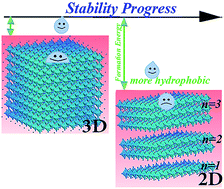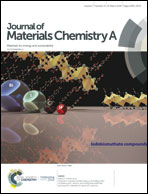Stability progress of perovskite solar cells dependent on the crystalline structure: From 3D ABX3 to 2D Ruddlesden–Popper perovskite absorbers
Abstract
Among all types of photovoltaics, perovskite solar cells (PSCs) have received extensive attention because of their potential for achieving cheap, lightweight, and fast fabricated devices. Although PSCs exhibit a power conversion efficiency (PCE) of up to 23%, they face issues regarding commercialization such as short lifetime. Remarkably, the most important key factors that regulate the durability of the devices are the type and crystalline structure of perovskite (PSK) materials. Though CH3NH3PbX3 is the first and also the widely utilized material as a light absorber in PSCs, it suffers from undesirable moisture stability, structural phase alteration, and photo and thermal instabilities. In this regard, the PSK crystal structure has been studied as a key factor to prolong the device lifetime. This review presents the progress of the changes in the PSK structure from 3 dimensional CH3NH3PbX3 to mixed cation or halide based PSKs and finally to Ruddlesden–Popper PSK two dimensional (2D) homologous structures regarding the lifetime improvement. To obtain insight on a realistic path towards durable and commercially viable PSCs, how the crystal formation energy, hydrophobicity, interface of the grains, and structural phase strength have been tuned to overcome the lack of the durability in PSK devices and the current status has been studied.

- This article is part of the themed collection: Recent Review Articles


 Please wait while we load your content...
Please wait while we load your content...